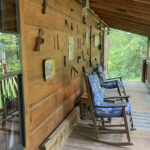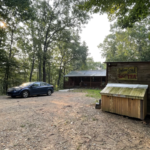As a software engineer, each day is a blend of creativity, collaboration, and problem-solving. Here’s a glimpse into what a typical day might look like for someone in this dynamic field.
Morning: Starting the Day Right
7:00 AM – 8:00 AM: Morning Routine
The day often starts with a personal routine, whether it’s a morning workout, a leisurely breakfast, or a quick scroll through tech news to stay updated on industry trends. Some might prefer a quiet morning at home, while others enjoy a brisk walk or bike ride to get energized for the day.
8:00 AM – 9:00 AM: Commute and Arrival
Depending on where you live, the commute to the office could be a short bike ride, a public transit journey, or even a walk if you’re close enough. Many companies also offer the flexibility to work remotely, making the commute as simple as moving from the bedroom to the home office.
Mid-Morning: Getting into the Flow
9:00 AM – 10:00 AM: Stand-Up Meeting
The day officially kicks off with a team stand-up meeting. These brief, daily check-ins ensure everyone is aligned, blockers are addressed, and priorities are set. It’s a great way to sync up with the team and understand the day’s goals.
10:00 AM – 12:00 PM: Coding and Development
Post-stand-up, it’s time to dive into coding. This could involve writing new features, debugging issues, or reviewing pull requests. Engineers use a variety of tools and languages, and the focus is on creating robust, scalable solutions. Pair programming is common, fostering collaboration and knowledge sharing.
Noon: Taking a Break
12:00 PM – 1:00 PM: Lunch
Lunchtime is an opportunity to recharge. Whether it’s grabbing a bite at a local eatery, eating at the office cafeteria, or preparing a meal at home, it’s important to take a break. Lunch is also a time to socialize with colleagues or attend tech talks and events, if available.
Afternoon: Collaboration and Creativity
1:00 PM – 3:00 PM: Meetings and Collaboration
The early afternoon is often reserved for meetings. These could be design discussions, sprint planning sessions, or one-on-ones with a manager. A culture of open communication is crucial for aligning on project goals and ensuring everyone’s voice is heard.
3:00 PM – 4:00 PM: Innovation Time
Many companies encourage engineers to spend a portion of their workweek on projects that interest them, even if they’re not directly related to their primary job functions. This time is dedicated to innovation, allowing engineers to explore new ideas, develop prototypes, or contribute to open-source projects.
Late Afternoon: Wrapping Up
4:00 PM – 5:30 PM: Focused Work
The late afternoon is a great time for focused work. Engineers often use this time to tackle complex problems, finalize code, or prepare for upcoming presentations. The office or home environment is conducive to concentration, with quiet zones and well-equipped workspaces.
5:30 PM – 6:00 PM: Wrap-Up and Planning
Before calling it a day, engineers typically wrap up their work, document progress, and plan for the next day. This might involve updating task boards, pushing code changes, or jotting down notes for tomorrow’s stand-up.
Evening: Unwind and Recharge
6:00 PM Onwards: Personal Time
After a productive day, it’s time to unwind. Some might hit the gym, join a recreational sports league, or participate in a yoga class. Others might head home to spend time with family, pursue hobbies, or simply relax.
Conclusion
Working as a software engineer is more than just a job; it’s an opportunity to be part of a vibrant, innovative community. Each day brings new challenges and opportunities to learn, collaborate, and create. Whether you’re coding the next big feature, brainstorming with your team, or exploring new ideas, life as a software engineer is dynamic and fulfilling.





